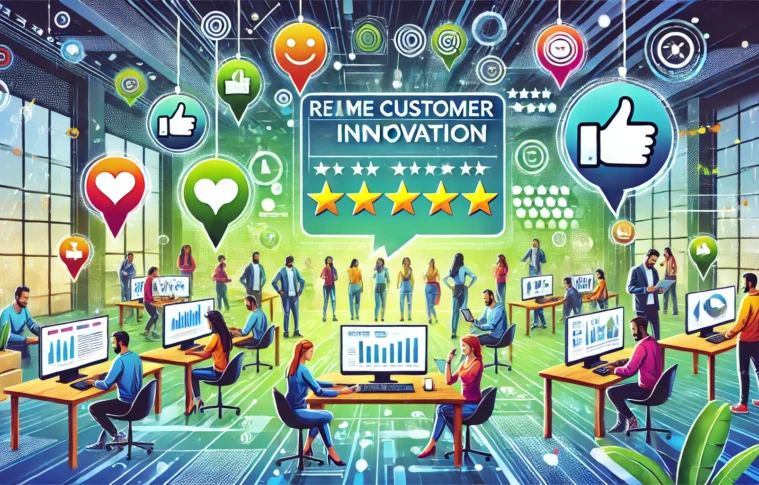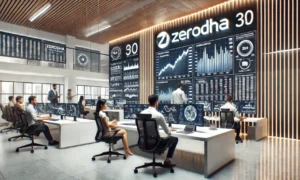Introduction
In today’s fast-paced business environment, staying ahead of competitors requires not only delivering high-quality products but also adapting to customer needs in real-time. Companies that leverage live customer feedback channels can drive continuous product innovation, ensuring that they remain responsive to market demands and ahead of their competition. This case study examines how businesses have effectively utilized real-time customer feedback to improve their products, enhance user satisfaction, and maintain a competitive edge.
Case Study 1: Adobe – Real-Time Feedback for Agile Product Development
Background
Adobe, a global leader in creative software, has embraced real-time customer feedback as a critical component of its product development strategy. With millions of users relying on its Creative Cloud suite, Adobe recognizes the importance of staying agile and responsive to its customers’ evolving needs.
Feedback Strategy
- Adobe XD – User Testing and Feedback Integration: Adobe XD, a design and prototyping tool, integrates live feedback from users directly into the development process. Adobe has set up user testing platforms where customers can submit feature requests, report bugs, and suggest improvements in real-time. This allows the product team to prioritize and implement changes quickly.
- UserVoice Integration: Adobe uses platforms like UserVoice to collect real-time feedback from users. These platforms allow customers to submit ideas and vote on the features they want to see. Adobe’s product teams then review this feedback to determine which requests will be implemented, ensuring that the voice of the customer directly influences product updates.
- Beta Programs and Community Engagement: Adobe frequently runs beta programs for new software updates, inviting users to test out new features and provide immediate feedback. This direct line of communication ensures that products are iteratively improved based on real user experiences.
Outcome
By integrating real-time feedback, Adobe has been able to create highly customizable and user-friendly products. Adobe XD, for example, became one of the most popular design tools in the market, partly due to its responsiveness to customer feedback. This agile approach to product development has allowed Adobe to stay competitive, improve user satisfaction, and drive innovation.
Case Study 2: Tesla – Leveraging Customer Insights for Continuous Innovation
Background
Tesla has revolutionized the automotive industry not only with its electric vehicles but also with its approach to leveraging real-time customer feedback. CEO Elon Musk has emphasized the importance of customer input in Tesla’s product development strategy, using it as a key driver for continuous innovation.
Feedback Strategy
- Over-the-Air Updates: Tesla vehicles are equipped with the ability to receive over-the-air (OTA) software updates, which enables Tesla to quickly implement changes and improvements based on real-time customer feedback. Customers can report issues, suggest enhancements, and experience new features almost immediately after they are developed.
- Social Media and Direct Engagement: Elon Musk uses social media platforms, particularly Twitter, to directly engage with Tesla customers. This allows him to gather instant feedback on Tesla’s products and listen to customer concerns or suggestions, which Tesla’s engineering teams can then prioritize.
- Tesla’s In-Car Feedback System: Tesla’s in-car interface allows drivers to provide immediate feedback about their experience, whether it’s related to software functionality, driving performance, or new feature requests. This real-time data is transmitted back to Tesla’s product teams, influencing ongoing vehicle improvements.
Outcome
Tesla’s ability to integrate live customer feedback has allowed the company to continuously improve its vehicles, from battery efficiency to autopilot features. The real-time feedback loop has resulted in rapid innovation cycles, with Tesla vehicles becoming increasingly sophisticated with every software update. This approach has also contributed to Tesla’s competitive advantage, as it helps the company stay at the forefront of the electric vehicle market.
Case Study 3: Amazon – Continuously Evolving Based on Customer Feedback
Background
Amazon is a prime example of a company that has built its business around the concept of customer obsession. The online retail giant continually uses real-time customer feedback to enhance its product offerings, optimize user experience, and drive innovation.
Feedback Strategy
- Customer Reviews and Ratings: Amazon’s review and rating system is one of the most powerful tools for gathering real-time feedback. Customers can instantly rate products, leave comments, and even ask questions about items. This immediate feedback provides Amazon’s product teams with valuable insights into customer satisfaction and product quality.
- Amazon’s A/B Testing: Amazon regularly uses A/B testing to evaluate customer responses to different versions of a product or feature. By comparing performance metrics such as click-through rates, purchase frequency, and user engagement, Amazon can quickly determine which versions resonate best with customers and make real-time improvements.
- Alexa Feedback Loop: Amazon’s voice assistant, Alexa, provides a unique channel for real-time feedback. Users can report issues, suggest new skills, or request feature enhancements directly through voice commands. This feedback is processed by Amazon’s engineering teams and can be used to refine Alexa’s functionality in future updates.
Outcome
By continuously collecting and analyzing real-time feedback, Amazon has been able to fine-tune its product offerings and improve user experience across various platforms, from its e-commerce website to Alexa. This focus on customer-driven innovation has allowed Amazon to remain a dominant player in retail and technology, constantly outpacing competitors by quickly adapting to changing consumer preferences.
Case Study 4: Starbucks – Using Customer Feedback to Innovate Product Offerings
Background
Starbucks has been highly successful in creating a personalized customer experience, and its approach to gathering real-time feedback has played a crucial role in the company’s ability to innovate and adapt quickly.
Feedback Strategy
- My Starbucks Idea: Starbucks launched an online platform called “My Starbucks Idea,” where customers could submit and vote on ideas for new products, store improvements, or service enhancements. Starbucks responded to popular ideas by incorporating them into its product offerings or operations.
- Mobile App Feedback: Starbucks uses its mobile app to gather instant feedback on product offerings and customer service. Users can rate their experiences and provide direct input on new drinks or features they would like to see.
- Real-Time Social Media Listening: Starbucks uses social media monitoring tools to track real-time conversations about the brand, allowing the company to react quickly to customer concerns, complaints, or product suggestions.
Outcome
Starbucks’ real-time feedback channels have allowed the company to stay in tune with customer preferences, leading to the introduction of popular products like the Pumpkin Spice Latte and Nitro Cold Brew. By constantly listening to its customers, Starbucks has managed to innovate and stay ahead of trends in the competitive coffeehouse market.
Key Benefits of Leveraging Real-Time Customer Feedback for Product Innovation
- Agility in Product Development
Real-time feedback allows companies to quickly iterate on their products, address issues, and introduce improvements. This helps businesses remain agile and responsive, ensuring that their products evolve with customer needs. - Enhanced Customer Satisfaction
By listening to and acting on customer feedback, companies can improve user experience, resolve pain points, and meet customer expectations more effectively, leading to higher satisfaction and loyalty. - Competitive Advantage
Companies that utilize live customer feedback gain insights that can give them a competitive edge. By continuously improving products based on customer input, these companies are better positioned to meet market demands and stay ahead of competitors. - Stronger Customer Relationships
Engaging with customers in real time fosters a deeper relationship between the brand and its users. It shows that the company values customer input and is committed to improving their experience, which can strengthen brand loyalty.
Conclusion: The Power of Real-Time Customer Feedback in Innovation
Incorporating real-time customer feedback into product development is a proven strategy for businesses aiming to stay ahead of the curve. Companies like Adobe, Tesla, Amazon, and Starbucks have demonstrated how effective live feedback can be in driving continuous improvement, enhancing customer satisfaction, and maintaining a competitive edge. By listening to their customers and responding swiftly, these companies have successfully built a culture of innovation that allows them to adapt and thrive in rapidly changing markets.
Disclaimer
Posts in the Notebook are written by individual members and reflect personal insights or opinions. Please verify any information independently. If you have any concerns, notify the admin immediately so we can take action before any legal steps are taken.





